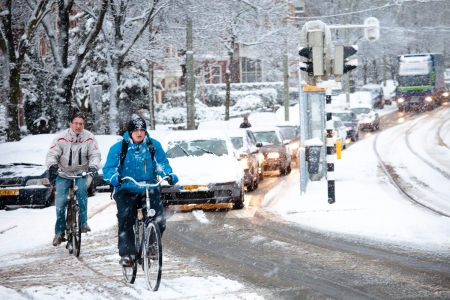In BRON, the database of crashes recorded by the police in the Netherlands, just under 1% of crashes in recent years appear to have taken place in slippery conditions due to snow, sleet, hail or frost (see Table 1). The extent to which this slipperiness was (partly) the cause of the crash is not known. This 1% is the average over all 12 months. In the winter months, of course, the share of crashes involving slipperiness is higher. In January, this share amounts to more than 4% of crashes and in February to more than 3%. For fatal crashes, the share involving slipperiness is slightly higher than for crashes in which the outcome is less serious. Slipperiness mostly occurred over a number of consecutive days, such as from 7 to 15 February 2021. During that period, about 30% of all registered crashes had involved slipperiness.

Table 1. Share of crashes (irrespective of severity), and share of fatal crashes, injury crashes, and property-damage-only crashes (PDO) in slippery conditions due to snow, sleet, hail and frost over 2012-2021 by month. Source: BRON, edited by SWOV.
Slipperiness is not only related to cold weather conditions. Slipperiness can also be caused by mud, wet leaves or other forms of soiled road surface. According to the BRON database, an annual average of 0.1% of registered crashes involved this kind of slippery road surface. In fatal crashes, it was noted slightly more often (0.3%) than in crashes with less serious outcomes. Again, it is not known whether this slipperiness was a (co-)cause of the crash, or just a road condition. (Heavy) rain and wet road surfaces also lead to slipperiness. This is addressed in the question What is the effect of rain?.
The abovementioned shares of crashes due to slippery roads are most likely considerable underestimates. It is known, for example, that crashes involving cyclists, and certainly cyclist crashes without motor vehicle involvement, hardly show up in police registrations (see, for example, SWOV fact sheet Cyclists). Yet, cyclists will be especially sensitive to slipperiness. See the question How many crashes occur on or due to slippery bicycle tracks?.
